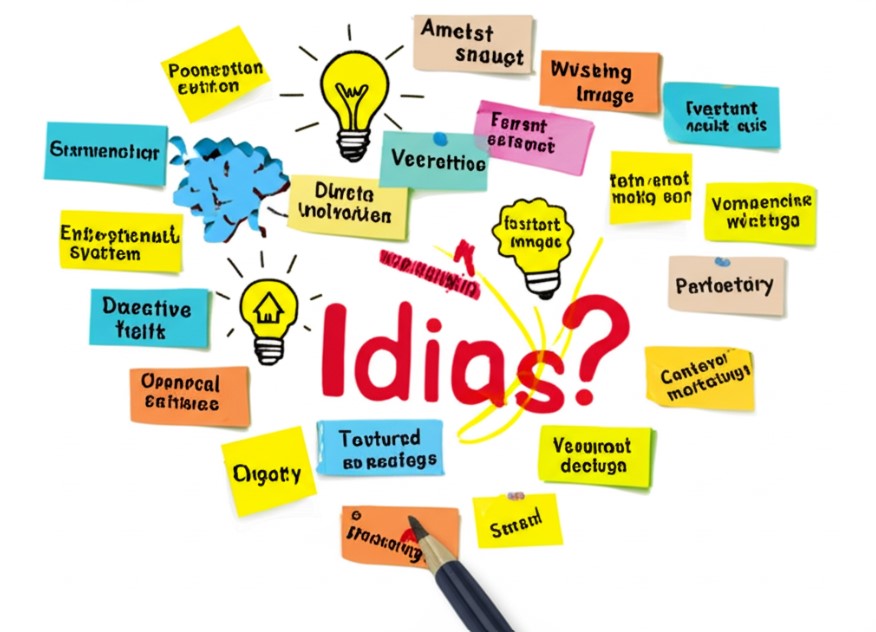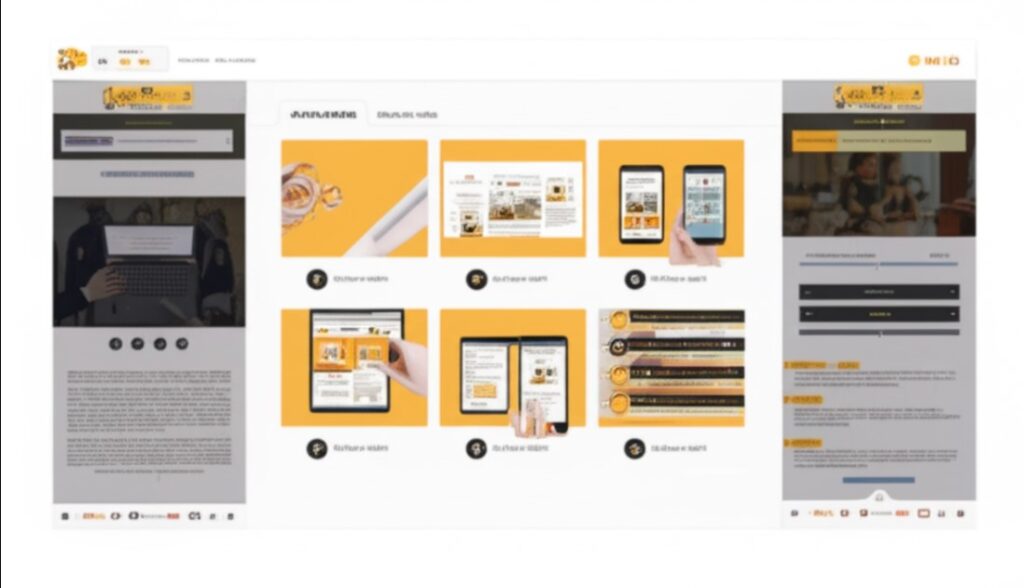As a beginner, ever thought about starting a blog but felt overwhelmed by where to begin? You’re not alone! Blog for beginner can seem daunting at first, but with a clear roadmap, anyone can create compelling content that resonates with readers. Whether you want to share your passion, build a personal brand, or attract customers, this 7-step blog for beginner guide will walk you through the entire process, from idea to publication.
Let’s dive in and unlock your blogging potential! Before we jump into the “how,” let’s quickly cover the “why.”
Why Should You Start a Blog?
Blogging offers numerous benefits:
Share Your Expertise: Become an authority in your niche.
Build a Community: Connect with like-minded individuals.
Improve Your Writing Skills: Practice makes perfect!
Boost Your Online Presence: Enhance your personal or business brand.
Generate Income: Through advertising, affiliate marketing, or selling products/services.

1. Choose Your Niche and Target Audience
The very first step is to figure out what you’ll write about and who you’ll be writing for. This is crucial for creating content that genuinely connects.
- What are you passionate about? What topics could you talk about for hours without getting bored? Your passion will fuel your consistency.
- What knowledge or unique experiences can you share? Even if a topic seems saturated, your unique perspective can make it stand out.
- Who is your ideal reader? Are they students, professionals, parents, hobbyists? Understanding their demographics, interests, and pain points will help you tailor your content directly to them.
- What problems can you help them solve? People search for solutions. Your blog can be that solution!
Think of it this way: If you’re a keen gardener, your niche might be “urban gardening for small spaces.” Your target audience could be apartment dwellers who want fresh produce but lack traditional garden plots.
2. Brainstorm Blog Post Ideas
Once you know your niche and audience, it’s time to generate specific content ideas. Don’t just wait for inspiration to strike; actively seek it!
- What questions do people in your niche frequently ask? Use forums, social media groups, and even the “People also ask” section on Google search results.
- What problems can you help them solve? If your audience struggles with budgeting, topics like “5 Easy Ways to Save Money Daily” would be perfect.
- What are some trending topics in your industry? Tools like Google Trends can show you what’s currently popular.
- Look at your competitors: What are popular blogs in your niche writing about? How can you offer a fresh perspective or more in-depth information?
- Consider different content formats:
- “How-to” guides: Step-by-step instructions.
- Listicles: “7 Best Productivity Apps.”
- Reviews: Product or service evaluations.
- Interviews: With experts in your field.
Pro-Tip: Keep a running list of ideas in a document or a dedicated app. You never know when inspiration will hit!

3. Outline Your Blog Post
Before you start writing, create a roadmap for your post. An outline ensures your content flows logically and stays focused.
- Start with your main point (your H1 heading). This is your blog post title.
- Break it down into major sections (H2 headings). These are the core arguments or steps.
- Further subdivide with sub-sections (H3 headings) if needed. These provide more detail under your main points.
- Plan your introduction: What hook will grab your reader’s attention?
- Map out your conclusion: What key takeaways do you want readers to remember? What’s your call to action?
Why outline? It prevents writer’s block, keeps you on track, and ensures your content is comprehensive and well-organized. This structure also helps search engines understand your content better.
4. Write Engaging and Valuable Content
Now for the fun part: writing! Your goal is to create content that’s not only informative but also enjoyable to read.
- Use clear, concise language: Avoid jargon unless you’re explaining it. Imagine you’re talking to a friend.
- Break up large blocks of text: Use short paragraphs (2-4 sentences) to improve readability.
- Incorporate bullet points and numbered lists: Like this guide! They make information digestible and scannable.
- Tell stories or use examples: This makes your content more relatable and memorable.
- Focus on value: Every sentence should aim to inform, entertain, or solve a problem for your reader.
- Natural Keyword Integration: While writing, naturally include keywords related to your topic. Don’t “stuff” them in; aim for them to fit seamlessly into your sentences. For instance, if you’re writing about “beginner blogging tips,” ensure that phrase, or variations of it, appears organically.
- Ask questions: Engage your reader by posing questions throughout your post, like “What’s your biggest struggle with [topic]?”
- Internal Linking: As you write, look for opportunities to link to other relevant posts on your own blog. For example, if you mention “keyword research,” you could link to a previous post you wrote titled, “The Beginner’s Guide to Keyword Research.” This keeps readers on your site longer and improves your site’s SEO.

5. Optimize for SEO and Featured Snippets
This is where your blog post becomes search-engine friendly, increasing its visibility on Google and other search engines.
- Craft a Compelling Title Tag: This is the clickable headline that appears in search results. Make it intriguing, include your primary keyword, and aim for around 50-60 characters.
- Example: “How to Write a Blog: 7 Steps for Beginners”
- Write an Enticing Meta Description: This is the short summary below the title in search results. It should encourage clicks, include keywords, and be around 150-160 characters.
- Example: “Learn how to start a blog with this easy-to-follow, 7-step guide for beginners. Get tips on choosing a niche, writing content, and SEO!”
- Utilize Header Tags (H1, H2, H3): Your main blog post title is your H1. Use H2s for your main sections (like “1. Choose Your Niche”), and H3s for sub-sections. These provide structure for readers and search engines.
- Image Optimization: Every image you use should have an alt-text description. This helps search engines understand what the image is about and is crucial for accessibility (screen readers for visually impaired users).
- Example: For an image of a person writing on a laptop, your alt text could be: “A person writing a blog post on a laptop, focusing on content creation.”
- Aim for Featured Snippets: Google often pulls direct answers to user questions and displays them prominently at the top of search results. To increase your chances:
- Directly answer common questions in your content (e.g., “What is a featured snippet?”).
- Use bullet points or numbered lists for concise, scannable information.
- Define terms clearly and simply.
6. Add Relevant Images and Visuals
Images aren’t just pretty; they enhance understanding, break up text, and make your blog post more shareable.
- Choose high-quality images: Blurry or pixelated images look unprofessional.
- Ensure relevance: Images should directly relate to your content.
- Use a mix of visuals: Photos, infographics, charts, screenshots, and even short videos can all enhance your post.
- Compress images: Large image files can slow down your website, hurting user experience and SEO. Use online tools or plugins to compress them without losing quality.
- Give credit: If you use stock photos, ensure you adhere to their licensing agreements.

7. Proofread and Publish!
You’re almost there! Don’t hit “publish” until you’ve thoroughly reviewed your work.
- Proofread for grammar and spelling errors: Even minor mistakes can undermine your credibility. Use tools like Grammarly, but don’t solely rely on them.
- Read it aloud: This helps catch awkward phrasing or sentences that don’t flow well.
- Check for clarity and conciseness: Can you say something in fewer words? Is every sentence necessary?
- Get a second pair of eyes: If possible, have someone else read your post. They might spot errors or areas for improvement that you missed.
- Categorize and Tag: Assign your blog post to relevant categories and add appropriate tags (e.g., “blogging tips,” “content marketing,” “SEO”). This helps readers navigate your blog and find related content.
- Promote Your Post: Once published, share your blog post on social media, in newsletters, and wherever your target audience hangs out.
Ready to Start Your Blogging Journey?
Writing a blog is a continuous learning process. Don’t aim for perfection from day one; aim for progress. The more you write, the better you’ll become at it. By following these seven steps, you’ll be well on your way to creating a successful blog that informs, engages, and truly provides value to your readers.
What’s the first topic you’re excited to blog about? Share your ideas in the comments below!

